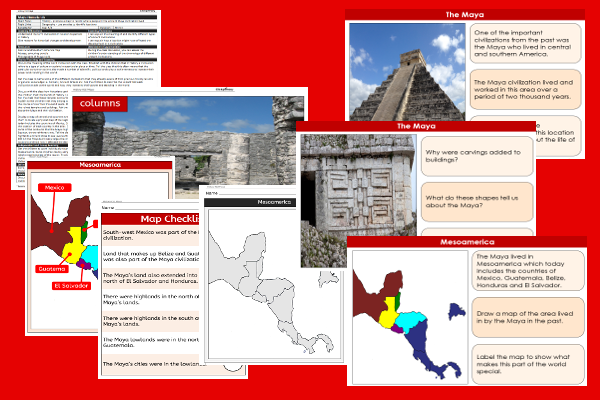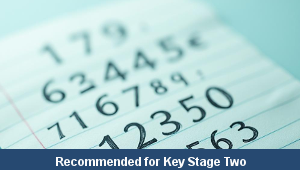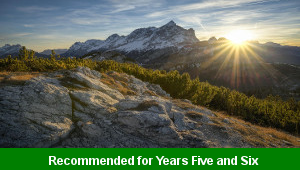Home > Key Stage Two > History > The Maya
Lesson One – Maya Homelands

This history teaching pack for Key Stage Two gets the children to produce a map to record and illustrate where people in the ancient Maya civilization lived and worked in the past.
The class can identify and explain how the location of the Mayan civilization impacted how it grew and developed over time such as access to natural resources and protection from attackers.
Download this teaching pack including a lesson plan, classroom activities and an interactive presentation to teach the children to produce a map to record and illustrate where people in the ancient Maya civilization lived and worked in the past
Activities in this teaching pack include a set of display posters to describe some of the buildings that have been left behind by the Mayan civilization, a template to label a map of different locations in Mesoamerica and a worksheet to record and label a map showing the extent of the Maya civilization from the past.
The interactive presentation gets the children to explore the location of the Maya civilization in the past and suggest reasons as to why the society grew and developed over time.
This lesson is part of a history scheme of work to research describe and present information and facts about the culture, traditions and achievements of the Maya civilization in the past . There are teaching activities for shared learning, differentiated worksheets to support independent learning and an interactive presentation to introduce concepts and key skills.
-

Maths Arithmetic Assessment
Assess abilities in solving arithmetic number problems for addition, subtraction, multiplication and division when working with informal and formal written calculations
-

Environment
Identify and describe some of the special landscapes and locations that can be found in the world and reflect on how they can be protected and preserved for the future
-

Silent Letter Words
Explore and illustrate the meanings and spellings of some different words with silent letters when using them in a range of topics and scenarios
-

Complaint Letters
Explain and model how to format and structure writing when composing letters of complaint about different issues and scenarios
